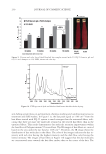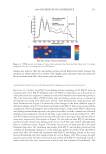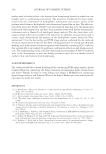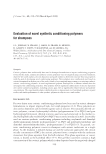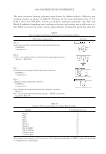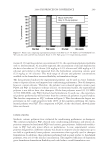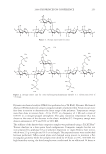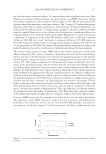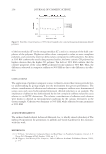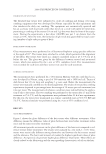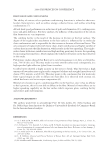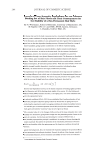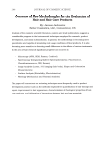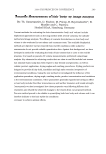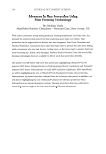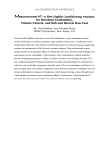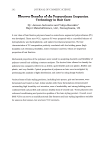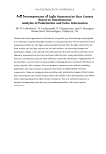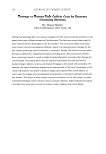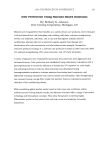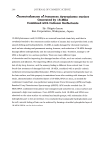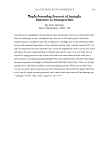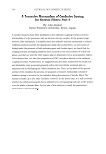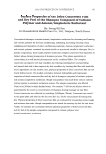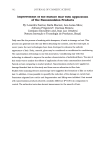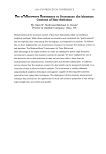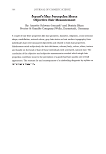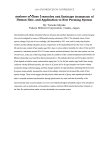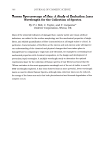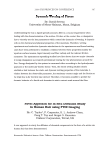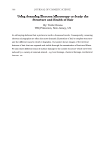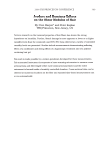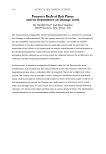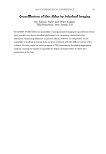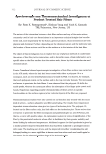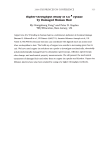JOURNAL OF COSMETIC SCIENCE 98 the Black population. The impact of these styling regimes may be intensifi ed due to in- herent properties in hair. As such, there is a need to understand the intrinsic characteris- tics of Black hair. Even though contributions in knowledge have been made (1–21), there is still limited information about hair from people of African descent. Among what is available in the literature, most researchers group hair from this population to compare it to other ra- cial groups, such as Asian and Caucasian, or they use low sample numbers because of limited availability of untreated hair. Within the Black population, it is often per- ceived that hair behaves differently depending on the country of origin. To date, sys- tematic studies have not been performed to understand the characteristics of hair within one racial group with different origins. This study investigates the behavior of curly hair of African descent that originates from different countries to better understand their specifi c needs. MATERIALS AND METHODS HAIR SAMPLES Curly untreated hair from people of African descent was collected from several countries including Ghana (GA n=35), Jamaica ( JA n=50), Kenya (KE n=50) Liberia (LI n=34), and the United States (US or AA n=75). Information about the participants’ ethnic background was obtained and only participants who were self-identifi ed as a member of the country-specifi ed ethnic group were categorized as such. Thus, the country from where the hair came and its respective ethnic group are used interchangeably throughout this paper. HAIR PREPARATION All hair was individually swatched and washed using a 10% ammonium lauryl sulfate solution for 1 minute followed by 1 minute of rinsing in 40°C tap water. The hair was then equilibrated in an environmental chamber at 45% relative for a minimum of 12 hours. AMINO ACID ANALYSIS To validate the untreated status of the hair, amino acid analysis on fi nely chopped hair samples from each subject was performed using acid hydrolysis in sealed tubes with ro- tary stirring at 120°C. The hair hydrolyzates were then analyzed on an L-8800 Amino Acid Analyzer (Hitachi, Tokyo, JPN) using ion exchange chromatography for amino acid separation. Amino acids were detected colorimetrically with ninhydrin after post-column derivatization. Lanthionine, cysteic acid, and tyrosine were selected as quality markers. The allowable limit of lanthionine was set at less than 0.5 g / 100 g amino acids. Quality limits for cysteic acid and tyrosine were less than 1.0 g / 100 g amino acids and greater than 1.8 g / 100 g amino acids, respectively. Samples were run in duplicate and only hair that met the requirements for quality was used in the study.
2008 TRI/PRINCETON CONFERENCE 99 HAIR CLASSIFICATION Two random hair fi bers from each of the following 5 different regions of the head were selected: frontal, vertex, occipital, right temporal and left temporal. The fi bers were cut to a fully extended length of six centimeters and were individually submerged in deionized water (23°C) that contained two drops of a commercial shampoo. They were immersed for three minutes to allow the fi bers to relax and confi gure to their original shape. After the fi bers were blotted dry and equilibrated in air for approximately 5 minutes, the number of waves (w), twists (t), curl index (i) and the smallest curve diameter (CD) were measured for each fi ber to evaluate the degree of curl in the hair. Examples of the curl measurements are shown in Figure 1. The mean value of each parameter was used to categorize the hair from each subject into curl groups I–VIII based on a segmentation tree analysis (Figure 2). Figure 1. Schematic representations of the curl measurements. (a) CD meter used in the determination of the curve diameter. (b) Curl index, which is the ratio of 6 cm/l1. (c) The number of natural constrictions along the length of a 5-cm extended fi ber. (d) The number of waves present when the end-to-end distance of a 5-cm extended fi ber is reduced to 4 cm.
Purchased for the exclusive use of nofirst nolast (unknown) From: SCC Media Library & Resource Center (library.scconline.org)









































































































































